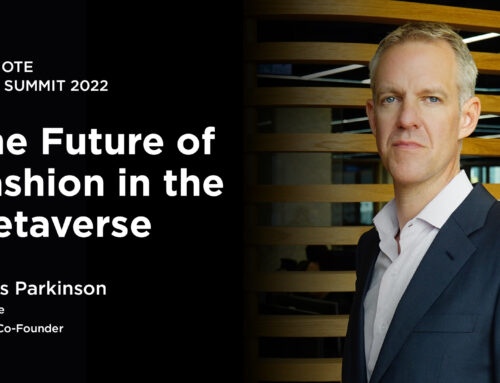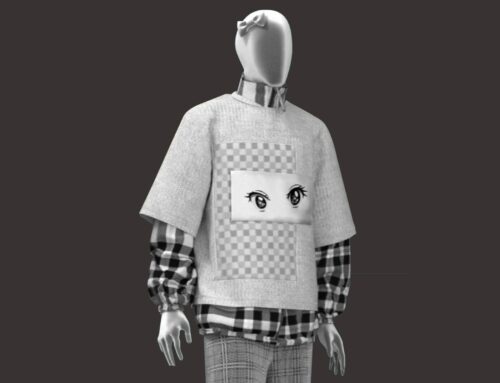The Unsustainability of Returns in Fashion
February 17, 2021
What can you as the retailer do to actively and meaningfully reduce the environmental impact of returns in the fashion space? The growing consumer awareness of sustainability calls for immediate change to the wasteful practice of buying-to-return.
Hardly a day goes by, it seems, when we don’t read about water scarcity, global warming, overpopulation, or food shortages. No one walking the planet in 2021 can claim ignorance regarding the environment and few get as bad a rap as the fashion industry, which has been accused of emitting more carbon than international flights and maritime shipping combined. The realization that the industry as a whole must change is not new – and many regulations and innovations support this – but are we considering the full picture?
To date, eco-warriors in the fashion industry have focused their attention predominantly on production, prioritizing sustainable, recycled, or compostable raw materials. This is assuredly a good start, but what about the less-addressed issue of returning goods to stores? Online and offline returns cost retailers nearly $400 billion annually, and that’s just on the financial side.
What about the carbon footprint?
This blog addresses the wasteful practice of buying-to-return and considers how far-reaching even a small change in this important area can be.

The pitfalls of fast fashion
Fast fashion was welcomed for making clothing more affordable for all but it also created an impulse to buy more than we actually need. Fashion sustainability portal, Sustain your Style, points out that “we buy 10 while our grandmothers bought 2.” Of course, this behaviour is not universal. At the same time, a growing number of consumers are showing interest in vintage fashion and recycled or sustainable clothing, however there is still room for growth in this area.
As fashion seasons shorten and clothing goes out of style faster than most can keep up with, a large number of today’s consumers still feel a near constant pressure to shop. And in a world where shops make it so easy for us to return the things we don’t want, our addiction to buying, trying, discarding, and returning is being fueled all the time.
The dark side of free returns
The promise of free returns on fashion retail sites has long been the norm and is one of the surest ways to boost online sales, yet it comes with a dark side. What is commonly touted as the “free” return is far from free when you count the environmental cost in the form of a massive carbon footprint created by persistently transporting goods to and fro. The environmental cost of transporting just one item using a courier is 181g of CO2. When you consider that globally, 17 billion items are returned every year, this equates to around 4.7 million metric tons of CO2 emissions annually – ten times the amount generated by 57,000 US homes over an entire year.
Even more harmful is the wasteful behavior that the free-return policy encourages. Instead of buying just one shirt and returning it if it doesn’t fit, or you don’t like it, it is now acceptable – and even expected – to order three shirts, and return the ones you don’t want, especially as this costs the customer nothing. Gulnaz Khusainova, writing in Forbes, points out that when buying clothes with the premeditated intention of returning some, the environmental impact is doubled. Not only must we factor in the CO2 emission from the original delivery, but from the return as well. Another side of this coin is the substantial pressure manufacturers are under to create more items than will ever be used, knowing that much of the clothing will be rejected, thus becoming mostly unfit for resale. More on that later.
The US Postal Service estimates an average cost of $10 per return for handling and processing every returned item but worse than this is the fact that once an item has been returned to a warehouse store, the chances of it being sold again dip drastically. Fewer than half of the items returned to stores are ever resold – certainly not at full price and maybe never. So what is the fate of these returned items? They are either carted around through a series of intermediaries and resellers who will try to squeeze as much profit from them as they can or, in the worst-case scenario, they end up in landfills at significant cost to the environment. Luxury brands, for example, have been known to throw stock away rather than risk damaging the prestige of their brand by selling at a discount.

Caring about where our clothes come from
Many are trying to change our wasteful attitude to fashion, and perhaps most prominent among sustainability crusaders is Prince Charles, who recently launched his “Modern Artisan” luxury collection in collaboration with Yoox Net-a-Porter. While not widely considered a fashion icon, the Prince is nevertheless making ripples in the fashion space through this 18-piece capsule collection of sustainable garments for the Prince’s Foundation. The garments are carefully manufactured from high-quality, natural, organic, and compostable material. Sewn to the highest standards of craftsmanship, they are designed to last. What’s more, they include classics like the camel coat, well-tailored dress trousers, and the cashmere blazer – items which never date and, it is hoped, won’t need to be retired for decades.
Explaining the motive behind the collection, Jacqueline Farrell, education director of the Prince’s Foundation, said, “we want to eliminate waste” and also to encourage consumers to think about fashion in a different way. People need to care more about quality, where raw materials are sourced, and recyclability. Just as we expect to pay more for premium quality or organic food, the Foundation hopes people will learn to pay more for clothing while conferring greater value upon it and holding on to it for longer.
Prince Charles is not the only one trying to make changes. In July 2018, ten UN organizations formed the UN Alliance on Sustainable Fashion, with the express aim of “changing the path of fashion.” Another organization, The Sustainable Apparel Coalition, includes in its membership more than 200 companies from across the spectrum of fashion’s global supply chain. Together, they formulated the Higg Index for measuring the environmental performance of clothing products. More than 10,000 manufacturers globally have embraced this index and include those measures as part of their operations.

The responsible retailer
It is very encouraging to see so much positive change on the horizon, but there is more to be done. Fashion retailers must ask themselves how to tackle the enormous climatic impact of unwanted fashion items and free returns? Being in a position of influence when it comes to these issues, retailers can play a seminal role in reeducating the market, both by changing their practices and raising awareness around the environmental cost of retail returns.
While every customer must have the right to return an item that isn’t suitable for them, that does not mean we should actively encourage the harmful practice of excessive returns. The best place to start making this change is at the level of the retailer.
Partners in sustainability
As virtual fitting technology continues to improve and more companies onboard these innovations, the impact on global returns will reverberate. Virtual fitting solutions allow customers to choose their clothes with more confidence and accuracy, so they are less likely to make choices that lead to returns. Every return avoided, is a carbon emission avoided and small wins add up to massive environmental gains over time. With a simultaneous effort to raise the public’s awareness about the harmful effects of returns on the environment, customers will be more motivated to ditch the practice of buying-to-return.
Another of Style.me’s valued clients, Life After Death Denim, are tackling sustainability issues head-on by using fabric woven from recycled and sustainable yarns in their lines. All their trims are recycled, buttons are made from scrap motor oil cans, and zippers and pocketing are made with recycled elements. What’s more, they have eliminated all unnecessary paper and plastic packaging. By on boarding Style.me they have added another feather to their sustainability cap.
Other forward-thinking brands like Perspective Fitwear(slogan: mindful of our impact) and All Day Alba (who offer an eco-friendly range made of recycled organic waste) have turned to Style.me as part of their efforts to demonstrate social responsibility and a commitment to reducing waste in the fashion industry.
The Takeaway
Now that sustainability is at the forefront of everyone’s minds, it is a great time to follow the lead of these retailers. What clearer demonstration of your willingness to take action on this matter than investing in a solution that will actively and meaningfully reduce the environmental impact of over-returns in the fashion space? Your customers will be delighted and the world will be a cleaner, safer and better place for it.



